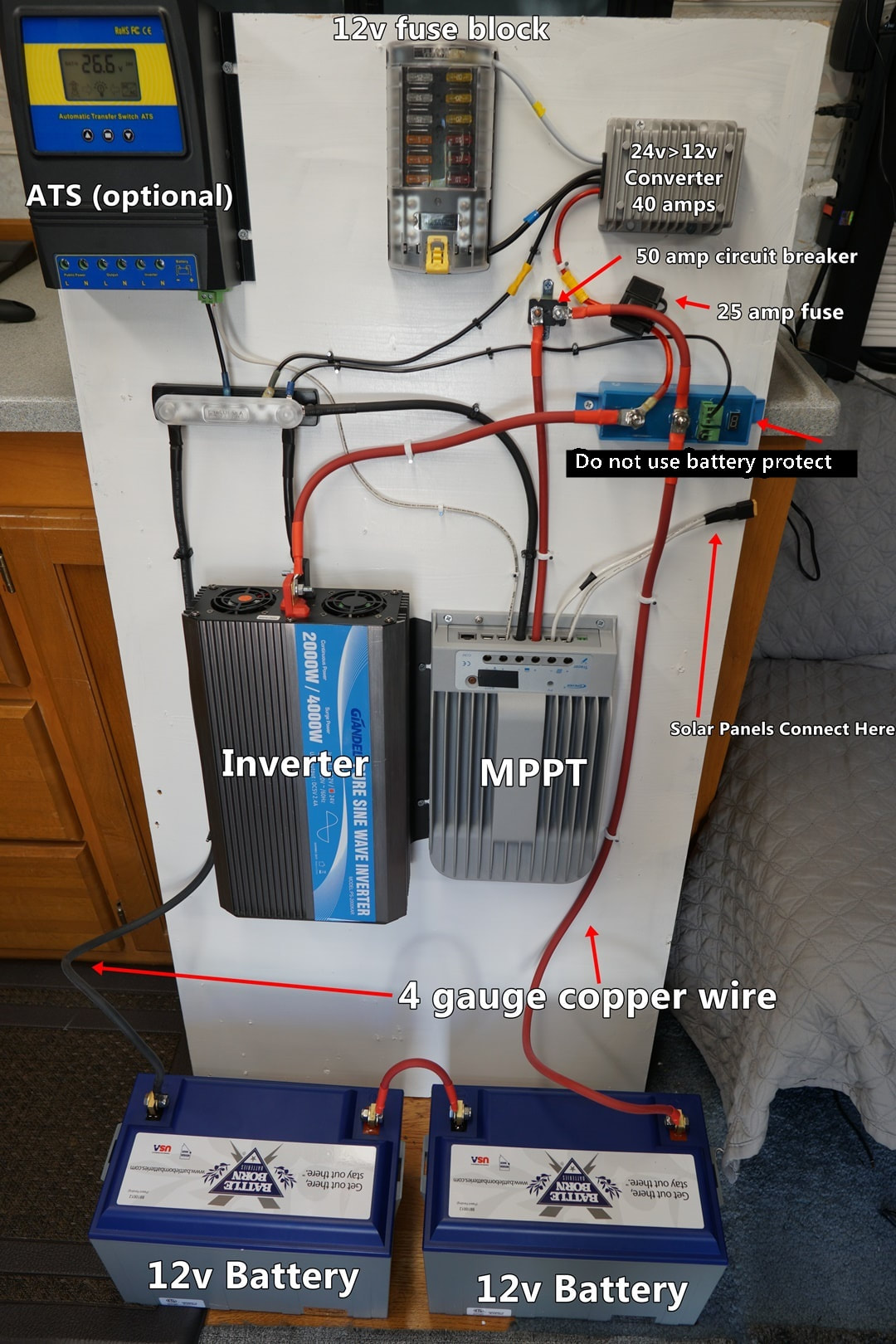socrbabe15
New Member
I have a travel trailer that I am re-doing from scratch. I am planning a 24V system, with ~400W solar on the roof and likely the LiFePO4 solar rack batteries. I will start with one, but may consider 2. I'll be using a stand alone surge protector for incoming 110v power. We are not currently big electrical users, but that may change with time. For reference, in my old truck camper I would go off grid for a week with 3 people with a single car battery, no solar, though this is a 31' trailer, so has inherently more use required and my daughter is tied to her ipad now. Hoping to change that during camping trips.
I am looking for information on systems/wiring diagrams, and don't fully understand how all the components hook together, especially the incoming shore power. I think I have my head fully wrapped around the solar portion, but once the 50A 110 has to join it, I get confused. Do I need transfer switches? Where do things hook up? I do like the SunGoldPower 2000W Inverter but my goodness it uses a lot of power when not on standby (150W). I looked at the diagram on the web site and it's solar only, so doesn't help much. Will doesn't seem to have gone over anything similar other than the all in one systems.

I expect to only use one leg of the 50A power initially, as the other leg will be for a (not used or installed) 2nd A/C, in the bedroom. I plan to have both A/C units only available on shore power or generator. I plan to have 12v USB outlets everywhere, and sparse 110V outlets. We'll be using boat style circuit breakers instead of a fuse panel. I would prefer individual parts instead of an all-in-one, for customization, and in case of a component failure. Can anyone help with a general diagram or system setup? I can most likely modify it to suit once I understand where the big pieces and routing goes. I would like to get the required shore power parts in now as I do my rebuild, then I'll add the remaining (solar and battery) parts as my RV comes together in a year or so. Any help would be appreciated.
I am looking for information on systems/wiring diagrams, and don't fully understand how all the components hook together, especially the incoming shore power. I think I have my head fully wrapped around the solar portion, but once the 50A 110 has to join it, I get confused. Do I need transfer switches? Where do things hook up? I do like the SunGoldPower 2000W Inverter but my goodness it uses a lot of power when not on standby (150W). I looked at the diagram on the web site and it's solar only, so doesn't help much. Will doesn't seem to have gone over anything similar other than the all in one systems.

RV Solar Power Blue Prints
Building a vehicle mounted solar power system? Let me help.
www.mobile-solarpower.com
I expect to only use one leg of the 50A power initially, as the other leg will be for a (not used or installed) 2nd A/C, in the bedroom. I plan to have both A/C units only available on shore power or generator. I plan to have 12v USB outlets everywhere, and sparse 110V outlets. We'll be using boat style circuit breakers instead of a fuse panel. I would prefer individual parts instead of an all-in-one, for customization, and in case of a component failure. Can anyone help with a general diagram or system setup? I can most likely modify it to suit once I understand where the big pieces and routing goes. I would like to get the required shore power parts in now as I do my rebuild, then I'll add the remaining (solar and battery) parts as my RV comes together in a year or so. Any help would be appreciated.


